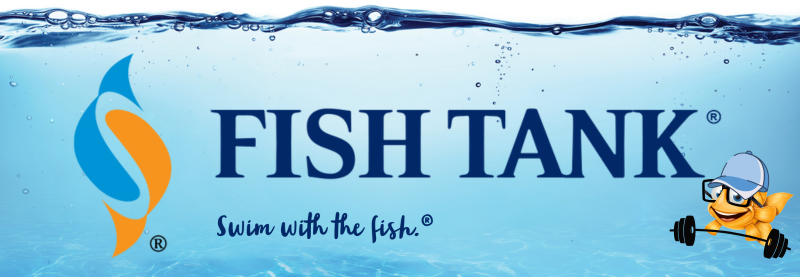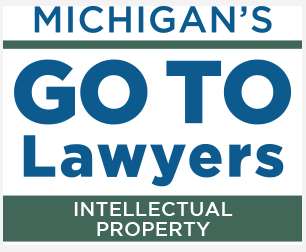Intellectual Property Insights from Fishman Stewart PLLC
Newsletter – Volume 24, Issue 4
Share on Social

Intellectual Property’s Role in Shaping the Super Bowl Experience
By Kameron F. Bonner
This year’s Super Bowl featured a thrilling overtime victory for the Kansas City Chiefs over the San Francisco 49ers. With estimates as high as 123 million viewers, America’s premier sporting event also serves as a grand stage for creativity and intellectual property (“IP”) protections that enhance the game’s success.
From the iconic logos and trademarks of the NFL and its teams, including the Chiefs’ arrowhead logo and the 49ers’ “SF” oval helmet logo, to the highly anticipated halftime show performances and commercials, the Super Bowl underscores the vital role that trademarks, copyrights, and patents play in the commercial and creative aspects of this annual event.
Trademark law is at the forefront of IP considerations during the Super Bowl. The NFL vigorously protects its trademarks, including the terms “Super Bowl” dating as far back as 1969 and “Super Sunday“, to maintain the exclusivity and value of its brand.
The NFL’s enforcement extends to preventing unauthorized businesses from using the NFL’s trademarks in promotions or on merchandise, a practice known as “ambush marketing.” A vigilant enforcement strategy against ambush marketing helps ensure that only official sponsors and partners can associate their products or services with the big event, much to the delight of paid advertisers whose 30-second commercial slots cost upwards of $7 million.
Copyright law also plays a significant role, particularly in the halftime show and the broadcast of the game itself. The performances during the halftime show, featuring some of the world’s biggest music stars including Usher, Alicia Keys, Ludacris, Lil Jon, Will.i.am, Jermaine Dupri, and H.E.R. this year, are subject to copyright protection. Additionally, the broadcast rights for the Super Bowl are a major aspect of copyright, with networks paying substantial fees for the exclusive right to air the game, which not only includes the live broadcast but also extends to replays, highlights, and other forms of media distribution.
Patents, however, are an often-overlooked aspect of the Super Bowl, encompassing everything from broadcasting technology to equipment and apparel. The event is a showcase for cutting-edge technologies, including advanced camera systems for broadcasting and immersive virtual reality experiences to enhance viewer and fan engagement.
The introduction of the 1st & Ten line system, a patented technology that superimposes a bright yellow line on the field to visually display the first-down line on the broadcast, revolutionized how fans watch football (see, e.g., US5917553A; US6100925A; US5953076A). The evolution of player tracking technologies, which use radio-frequency identification (RFID) tags to monitor real-time player stat tracking such as described in US10609762B2, has helped fuel the advancement of sports analytics and the proliferation of sports gambling such as Fantasy Football.
The interplay between IP and the Super Bowl illustrates the importance of innovation in sports and entertainment. By protecting the rights of creators, innovators, and organizations, IP law ensures that the Super Bowl remains at the forefront of technological advancement.
Kameron is a Partner at Fishman Stewart PLLC, specializing in Intellectual Property with over ten (10) years of experience counseling clients on patent, trademark, and related contractual matters. Kameron’s practice encompasses all aspects of preparing, procuring, and enforcing worldwide IP rights. Check out his full bio here.
Related Content from Fishman Stewart
In our previous FishTank article “The Great Beige-Off: Influencer Sues for ‘Vibe’ Infringement,” we reported on Sydney Nicole Gifford’s lawsuit against fellow influencer Alyssa Sheil over allegations of copyright infringement involving neutral-toned social media content.
People have long pondered whether or not the Giza pyramids were indeed solely burial chambers, which was the only known, and archaeologically determined, use—until now.
As the story goes, Klein was so taken with the indescribable blue of the sky over the Mediterranean in Nice, France, that he dedicated his artistic talent developing a blue that would imbue the canvas with this color in its purest form.
Despite her pseudo-legal background in Suits, Meghan has been running into one issue after another in her efforts to register the trademark and logo for her new lifestyle company, for now, called “AS EVER”.
By 1930, efforts began in New York to replace Mother's Day with Parent's Day because men were more than just breadwinners. Those efforts didn't catch on, probably because in that era, women often spent more time in the home.
In February, Nike and Skims announced that they will be working together on a new brand, NikeSkims. The co-brand will create a new line of training apparel, footwear, and accessories specifically designed to meet the unique needs of women athletes.
Generally, federal courts have exclusive jurisdiction over copyright cases, and often, this presents an insurmountable paywall for individual artists and small businesses to vindicate their rights, especially where the value of the individual copyrighted works are relatively low.
Dedicated to raising public awareness about the importance of encouraging innovation and creativity throughout the world, the World Intellectual Property Organization (WIPO) annually observes World Intellectual Property Day on April 26 to showcase the role that patents, trademarks, industrial designs, copyrights and trade secrets play in our everyday lives.
Hold onto your foam fingers, sports fans – college sports just got a whole lot more interesting! The latest updates to Name, Image, and Likeness (NIL) rules are making student-athletes bigger than ever, and it’s not just about the game anymore.
Did a federal court in Louisiana recently decide that US copyrights are global rights? It seems so.
IDENTIFYING, SECURING AND ADVANCING CREATIVITY®

















